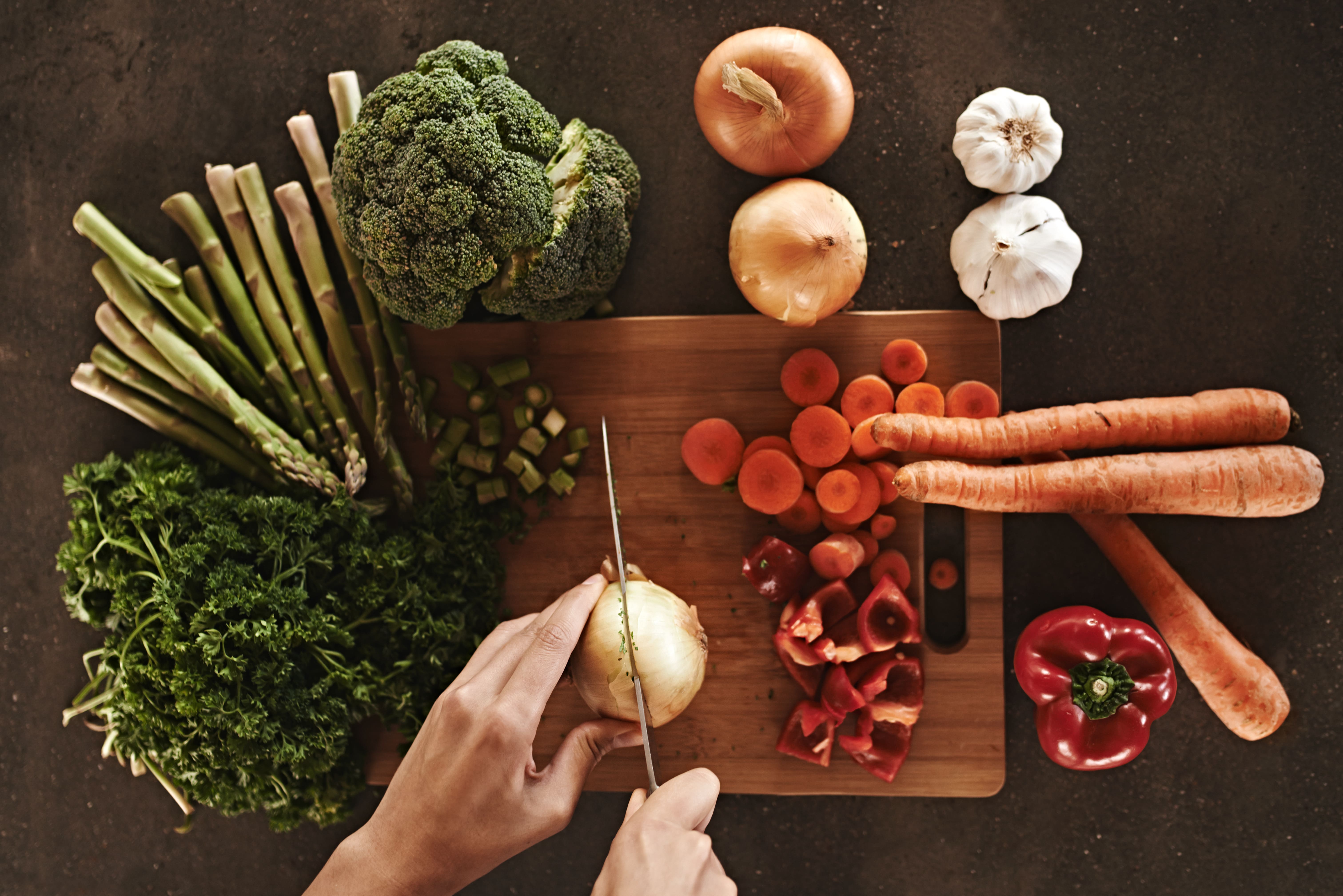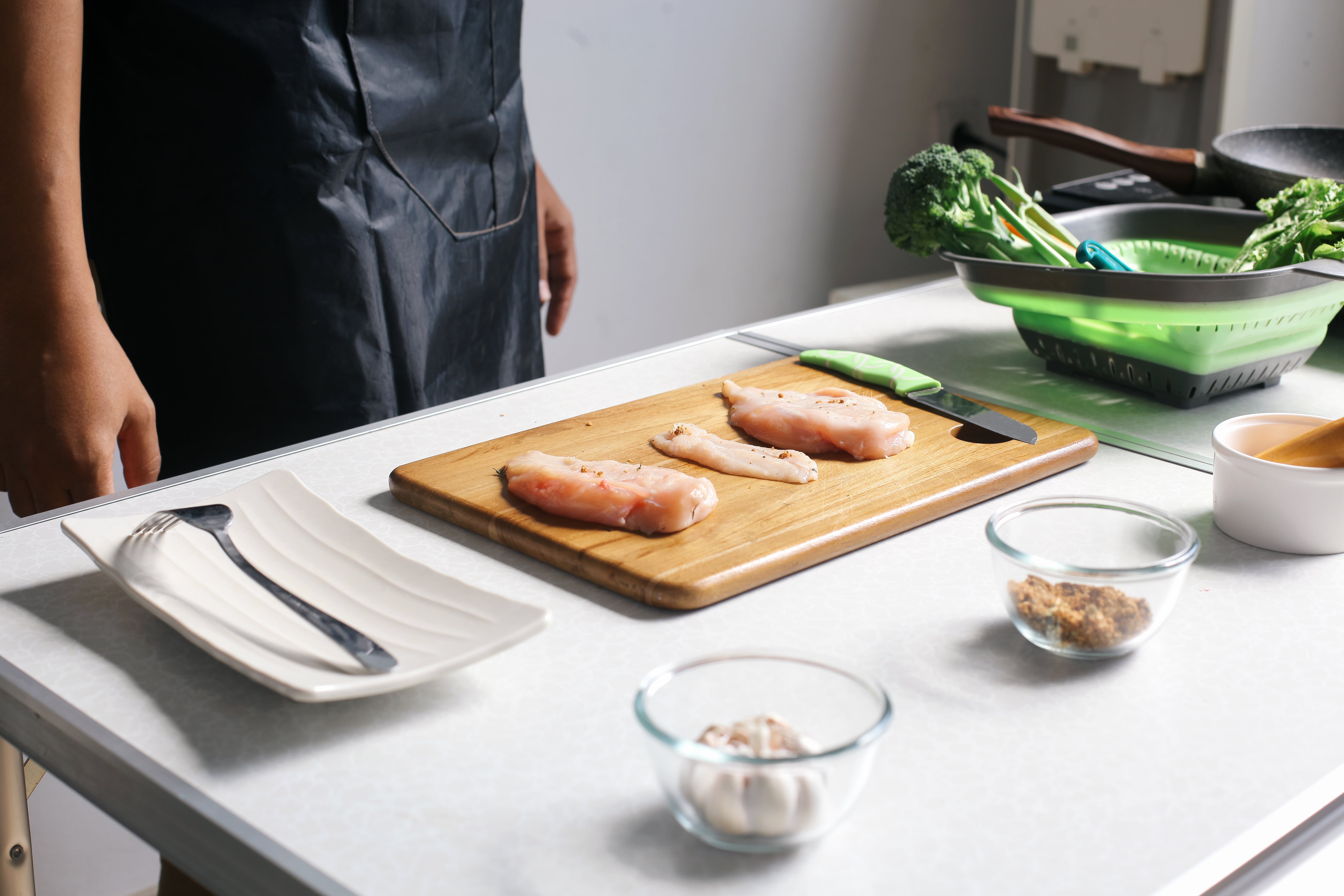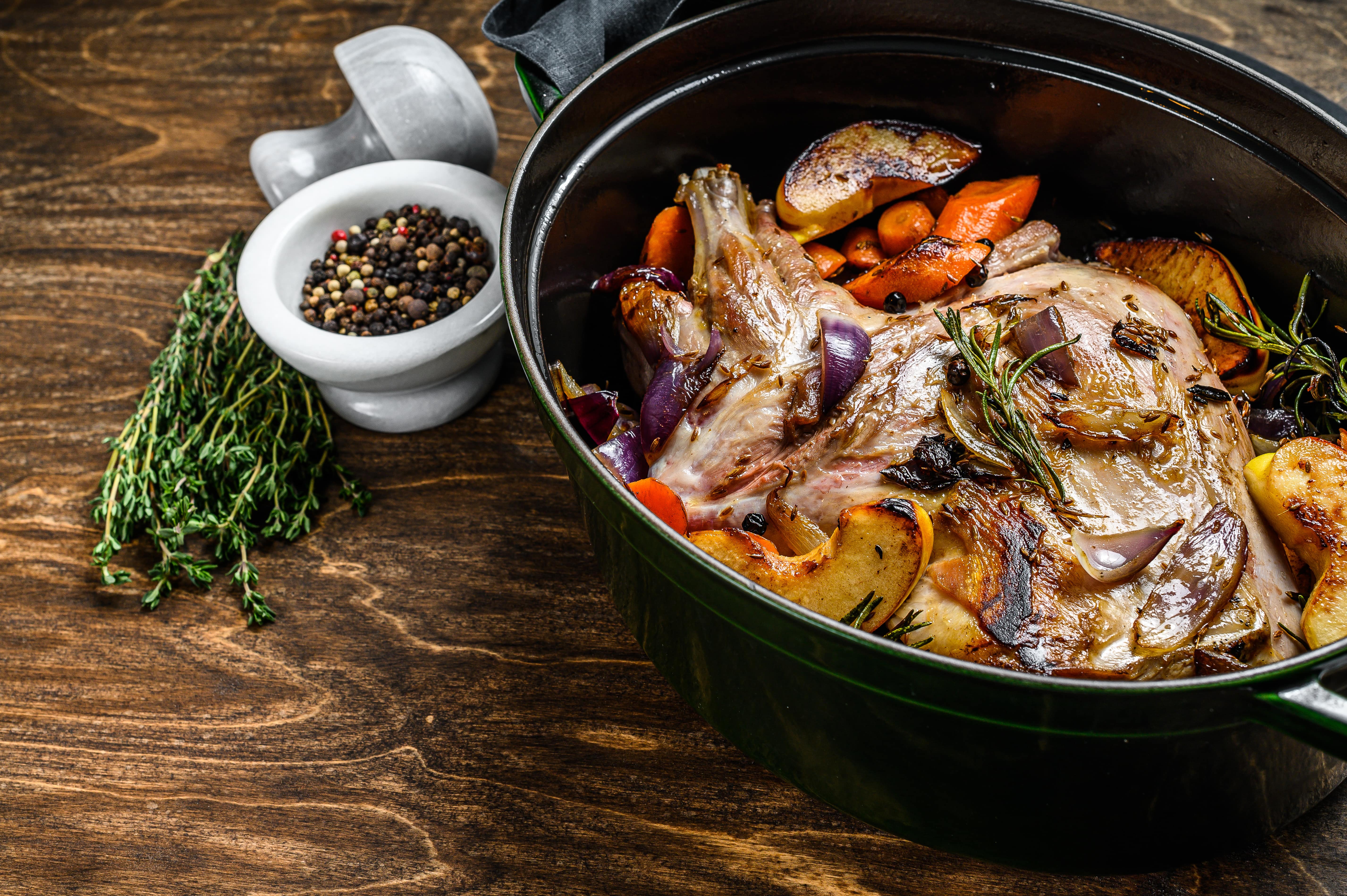Key Takeaways
- Crockpot meals can support stable glucose when built with lean proteins, fiber-rich vegetables, and strategic portions of whole grains or beans—delivering comfort food without the crash.
- Slow cooker recipes preserve nutrients, naturally deepen flavors, and make meal prep easier, reducing reliance on takeout or processed foods that spike glucose levels.
that {{mid-cta}}
Walking into the house on a chilly evening to smell slow cooker meals ready to go? It doesn’t get much easier (or more delicious) than that. Crockpot dinners are perfect for weeknight dinners, when schedules are jam-packed and your cravings for comfort food are at an all-time high.
With a few smart ingredient choices, your slow cooker can simplify dinner and support steady energy and metabolic balance. The right Crockpot recipes also deliver all the warmth and satisfaction you’re craving while keeping your glucose stable, energy consistent, and hunger in check for hours.
Slow cooker recipes often feature a few classic ingredients:
- Proteins: chicken, chicken thighs, chicken breast, ground beef, lean beef, pork roast, shredded chicken
- Plant-based proteins: lentils, chickpeas, or quinoa
- Fiber-rich veggies: sweet potato, butternut squash, and root vegetables
These ingredients can make weeknight meals nutrient-dense and satisfying. Whether meal prepping for the week or trying to get a hands-off dinner on the table, slow cooker meals are your time-saving solution.
Why Crockpot Meals Support Metabolic Health

If you want to save time, preserve nutrients, and support steady blood sugar levels, dust off your slow cooker and put it to good use.
Making larger portions of proteins, veggies, beans, or whole grains for meal prep allows you to portion meals for the whole family, avoiding takeout or convenient processed options. Slow cooking is gentle on nutrients, preserving vitamins and minerals that may be destroyed by high-heat stovetop or oven cooking.1
Slow cooking also transforms tougher cuts of lean meat into tender bites without relying on extra fats or heavy sauces. With hours to develop flavor, you won’t need sodium-packed marinades or sugary sauces. Herbs, spices, and acids like cinnamon, rosemary, and vinegar add depth naturally.
Lean meats, veggies, whole grains, and beans are perfect candidates for crockpot meals, encouraging the fiber-protein combo that helps steady glucose and keep you full.
Seasonal Staples for Your Crockpot

Squash & Root Vegetables
Butternut squash, sweet potatoes, carrots, beets, and parsnips bring natural sweetness, vibrant color, and fiber. They hold up well to slow cooker cooking, which is perfect for weeknight dinners.
While starchy vegetables like sweet potatoes can raise glucose, pairing them with lean proteins, beans like black beans, white beans, or chickpeas, and plenty of non-starchy veggies helps minimize spikes.
Lean Proteins
Slow cooker chicken, chicken thighs, chicken breast, ground beef, beef stew meat, pork roast, shredded chicken, pulled pork, and plant-based options like lentils and chickpeas anchor your Crockpot recipes. Slow cooking turns budget-friendly cuts into tender, flavorful meals without breading or frying.
Protein stabilizes glucose, supports muscle repair, and keeps you full. Combine with whole grains or beans for a balanced slow cooker meal.
Whole Grains & Beans
Quinoa, barley, farro, white beans, black beans, and kidney beans add heartiness and fiber. Used in moderation, they help balance glucose while keeping meals satisfying.
Fall Herbs & Spices
Don’t underestimate spices like cinnamon, rosemary, thyme, sage, and turmeric. They bring flavor and support metabolic health.2,3 Acids like vinegar or lemon juice may reduce the digestion rate of starches, stabilizing glucose.2,3
Sample Hearty Crockpot Recipes for Fall
These easy slow cooker recipes keep glucose steady, support meal prep, and satisfy the whole family.
High-Protein Turkey Chili with Beans and Squash
-min.jpg)
Servings: 6 | Prep Time: 15 min | Cook Time: 35 min
Ingredients:
- 1 lb lean ground turkey or ground beef
- 1 cup black beans, drained and rinsed
- 1 cup kidney beans
- 2 cups butternut squash, peeled and cubed
- 1 (14.5 oz) can diced tomatoes (no added sugar)
- 1 medium onion, diced
- 3 cloves garlic, minced
- 1 tbsp chili powder
- 1 tsp ground cumin
- 1 tsp smoked paprika (optional)
- 1/2 tsp black pepper
- 1/2 cup low-sodium chicken or vegetable broth
- 2 tbsp olive oil
- Optional toppings: non-fat Greek yogurt, chopped fresh cilantro
Instructions:
- Heat olive oil in a large pot over medium heat. Add onions and garlic, sauté for 2–3 minutes until fragrant.
- Add ground turkey, breaking it apart with a spoon. Cook until browned and fully cooked, about 6–8 minutes.
- Stir in chili powder, cumin, smoked paprika, and black pepper. Cook 1 minute to bloom the spices.
- Add diced tomatoes, butternut squash, black beans, kidney beans, and broth. Stir to combine.
- Bring to a simmer, then cover and cook for 20–25 minutes until the squash is tender. Stir occasionally.
- Taste and adjust seasonings. Serve hot with a dollop of Greek yogurt and fresh cilantro if desired.
Tip: For extra protein, stir in a handful of cooked quinoa or lentils.
Chicken, Apple, and Root Veggie Casserole
Servings: 4–6 | Prep Time: 10 min | Cook Time: 4–5 hours (Crockpot)
Ingredients:
- 1.5 lbs (700 g) boneless, skinless chicken thighs
- 2 tart apples (Granny Smith apples), peeled, cored, and diced
- 2 cups sweet potatoes, peeled and cubed
- 2 cups parsnips, peeled and cubed
- 1 medium onion, diced
- 1 tsp dried rosemary
- 1 tsp dried thyme
- 1 tbsp apple cider vinegar
- 1/2 cup low-sodium chicken broth
- 1/2 tsp black pepper
- Optional garnish: fresh parsley
Instructions:
- Layer sweet potatoes, parsnips, apples, and onions in the Crockpot.
- Place chicken thighs on top of the vegetables.
- Sprinkle rosemary, thyme, and black pepper over everything.
- Drizzle apple cider vinegar and chicken broth evenly over the ingredients.
- Cover and cook on low for 4–5 hours or high for 2–3 hours, until the chicken is tender and the vegetables are cooked through.
- Serve warm, optionally garnished with fresh parsley. Pair with a leafy green salad to round out the meal.
Tip: For extra flavor, sear the chicken thighs in a hot pan for 2–3 minutes per side before adding to the Crockpot.
Beef + Barley Soup with Beets and Carrots

Servings: 6 | Prep Time: 15 min | Cook Time: 6–8 hours (slow cooker)
Ingredients:
- 1 lb (450 g) lean beef stew meat, diced
- 1/2 cup pearl barley
- 2 medium beets, peeled and diced
- 2 medium carrots, peeled and diced
- 2 celery stalks, diced
- 1 medium onion, diced
- 4 cups low-sodium beef bone broth
- 2 bay leaves
- 1/2 tsp black pepper
- 2 tbsp fresh parsley, chopped (plus more for garnish)
Instructions:
- Place beef, barley, beets, carrots, celery, and onion in the slow cooker.
- Pour beef bone broth over the ingredients. Add bay leaves and black pepper. Stir to combine.
- Cover and cook on low for 6–8 hours or high for 3–4 hours, until beef is tender and vegetables are cooked.
- Remove bay leaves. Stir in fresh parsley before serving.
- Taste and adjust seasoning. Serve hot.
Tip: Keep the pearl barley portion moderate to keep this soup glucose-friendly. Adding a squeeze of lemon juice before serving brightens the flavors.
The Metabolic Playbook: Building a Balanced Crockpot Meal

While our sample meals should get the creative juices flowing, you can use this blueprint to come up with your own fall slow cooker recipes or adjust your favorites to be more balanced.
- Start with a protein anchor: Chicken, turkey, beef, pork, tenderloin, fish, tofu, tempeh, or legumes should make up at least a quarter of the Crockpot to help stabilize glucose, support muscle growth and repair, and keep you feeling full.
- Fill half with vegetables: Load up on non-starchy veggies like greens, peppers, zucchini, broccoli, cauliflower, mushrooms, and tomatoes. These vegetables provide a lot of nutrients, antioxidants, and fiber without significantly affecting your glucose.
- Choose whole grains, beans, or starchy veggies for your carb choice: Grains, beans, or starchy veggies like corn, peas, potatoes, or winter squash should make up about a quarter of your meal. These veggies are loaded with nutrients and fiber, which slow digestion and provide a more stable glucose response than you would see with refined or simple carbohydrates.
- Include spices and acids to support stable glucose: While spices and acidic ingredients can add lots of flavor without turning to added sugars or sodium-packed mixes, they may support your metabolic health in another way, too. Research suggests that including acidic foods like vinegar, pomegranate juice, or kiwi with starchy meals can reduce the oral and gastric digestion of starch by 40 to 50 percent, thereby reducing the amount of glucose released into the bloodstream.4
Using Signos to Personalize Your Crockpot Routine

Understanding how your body metabolizes different foods can turn meal prep from a guessing game into a science. With Signos’ continuous glucose monitoring (CGM) system, you can see in real time how a bowl of turkey chili, chicken and root veggie casserole, or beef and barley soup affects your glucose.
Try small, intentional experiments to optimize your recipes: add extra protein, swap a starch for more fiber, tweak the spices, or add a splash of vinegar—and watch how your glucose curve responds. Signos makes it easy to track these changes and compare them side by side, so you can discover what works best for your unique metabolism.
You can also explore how your daily habits interact with these meals. Pair a higher-carb crockpot dish with a short walk before or after eating, or track how your glucose responds on days with more sleep versus less. Signos visualizes these patterns, helping you make intentional, data-driven choices that fit your lifestyle.
Suggested Experiments with Signos
- Protein Swap Test: Add extra protein (e.g., more turkey, chicken, or Greek yogurt topping) and see if glucose spikes are smaller or more stable.
- Carb & Fiber Adjustment: Reduce starchy ingredients or increase fiber-rich veggies like squash, carrots, or parsnips; track post-meal glucose and satiety.
- Spice & Flavor Variations: Experiment with spices, vinegar, or citrus and observe any changes in glucose response or fullness.
- Meal Timing & Activity Pairing: Try a short walk, light housework, or stretching before or after meals, and compare glucose curves versus sitting still.
- Sleep & Meal Interaction: Track how the same meal affects you on days with varying sleep quality to uncover patterns in glucose stability.
Pro Tip: Log your experiments directly in the Signos app and use the CGM graph to visualize which tweaks help your meals feel satisfying without unwanted glucose spikes.
The Bottom Line
Your Crockpot isn’t just for carb-filled, heavy meals that leave you napping on the couch afterward. By prioritizing lean proteins, seasonal produce, spices, and strategically using whole grains and starchy veggies, your slow cooker can become a powerful tool for managing your metabolic health this fall. And with Signos, you can adapt your meals and activities to work for you and your health with intention.
Learn More With Signos’ Expert Advice
Ready to see how your favorite Crockpot meals affect your unique metabolism? Discover how Signos can improve your health by pairing a continuous glucose monitor with personalized insights that help you make informed and intentional decisions about your diet and lifestyle, and learn more about glucose and its role in your health.
Topics discussed in this article:
References
- Coe S, Spiro A. Cooking at home to retain nutritional quality and minimise nutrient losses: A focus on vegetables, potatoes and pulses. Nutrition Bulletin. 2022;47(4):538-562. doi:10.1111/nbu.12584
- Zelicha H, Yang J, Henning SM, et al. Effect of cinnamon spice on continuously monitored glycemic response in adults with prediabetes: a 4-week randomized controlled crossover trial. American Journal of Clinical Nutrition. 2024;119(3):649-657. doi:10.1016/j.ajcnut.2024.01.008
- Jabczyk M, Nowak J, Hudzik B, Zubelewicz-Szkodzińska B. Curcumin in metabolic health and disease. Nutrients. 2021;13(12):4440. doi:10.3390/nu13124440
- Freitas D, Feunteun SL, Brodkorb A. Pairing acidic and starch-rich foods lowers glycaemic responses by inhibiting oro-gastric starch hydrolysis: Evidence from in vitro semi-dynamic digestion. Food Research International. 2025;213:116551. doi:10.1016/j.foodres.2025.116551




.svg)










.svg)
.svg)
.svg)
.svg)
.svg)
.svg)
.svg)
